Key takeaways:
- Engaging attendees requires creating shared experiences and utilizing technology to enhance interaction and connection.
- Active participation transforms attendees into a community, fostering loyalty and memorable experiences.
- Personalized experiences, like tailored playlists and custom merchandise, significantly enhance attendee satisfaction and connection.
- Measuring engagement success through feedback, social media interactions, and attendance patterns helps improve future events.
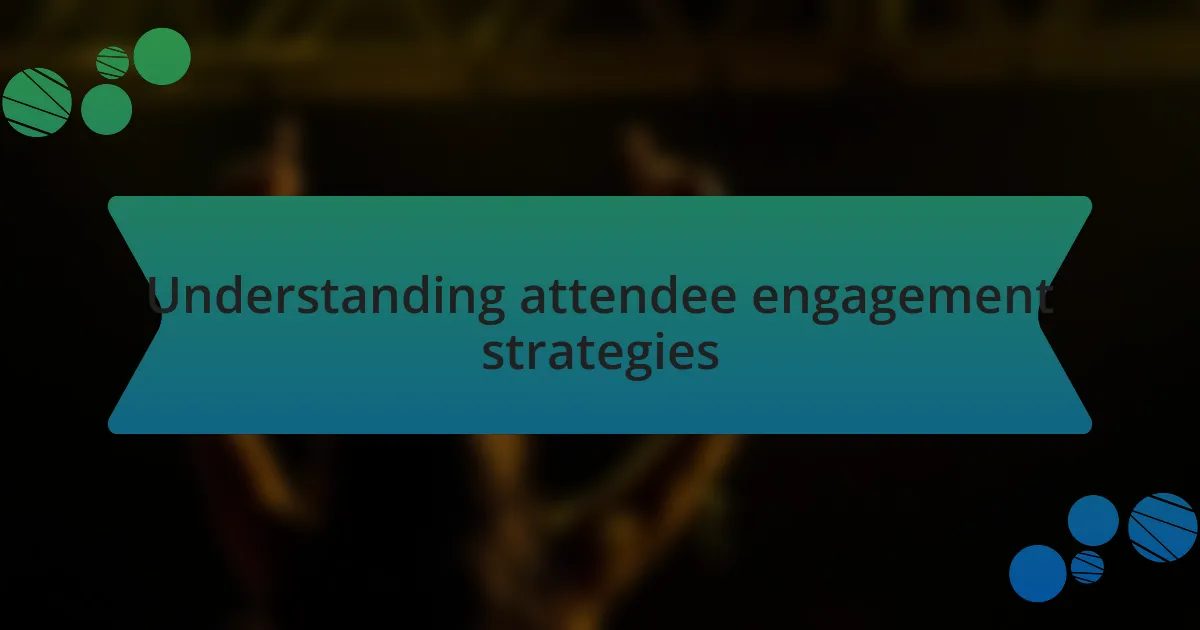
Understanding attendee engagement strategies
Engaging attendees goes beyond just providing a lineup of performers; it’s about creating an experience that resonates with them. I remember attending a festival where the organizers set up interactive art installations. The energy was palpable, encouraging conversations among strangers and making people feel connected. Have you ever noticed how a simple conversation can transform a festival experience?
Another critical aspect is understanding your audience’s interests. During one event, I observed how a lip-sync competition brought out the competitive spirit in attendees, leading to spontaneous group support and cheering. This not only elevated individual performances but also fostered a sense of community. It made me wonder: how often do we overlook the power of shared experiences in driving engagement?
Moreover, leveraging technology plays a huge role in attendee engagement. During a recent event, the use of a live polling app allowed us to vote on the next song, and I was surprised to see how invested everyone became in the outcome. The excitement in the air was electric, turning a listening experience into an interactive one. Isn’t it fascinating how technology can bridge the gap between artists and audiences, making each event feel more personal?
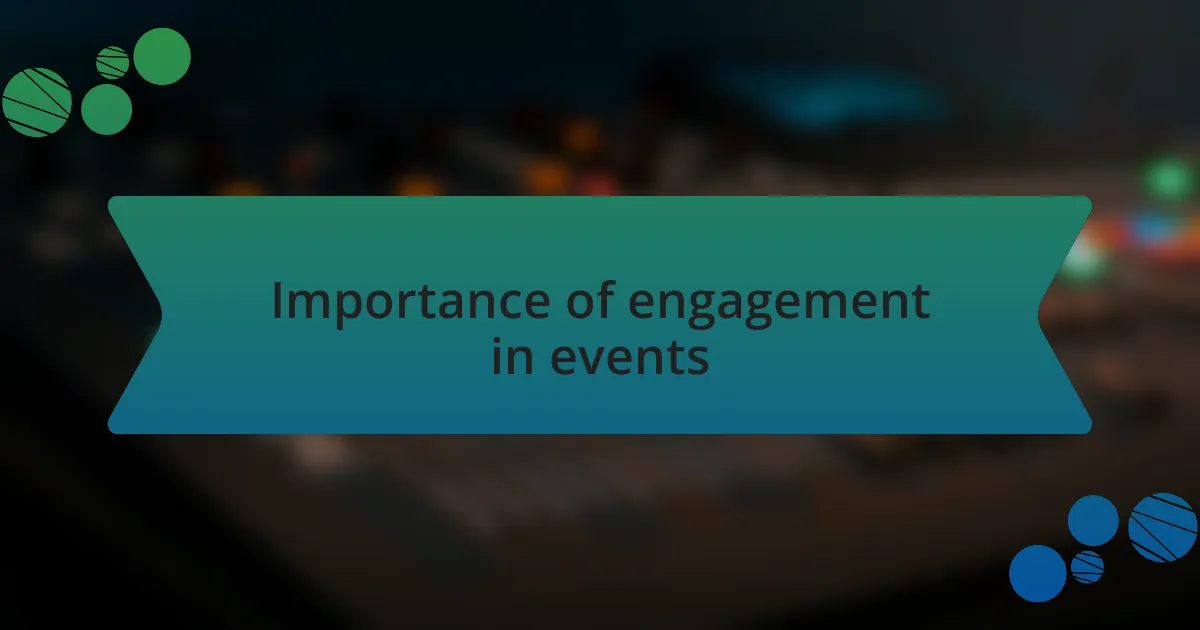
Importance of engagement in events
Engagement is essential because it transforms attendees from passive spectators into active participants. I once attended a rave where the DJ encouraged everyone to share their own song requests through social media. The moment their choices were played, you could feel the collective excitement. Isn’t it amazing how personal input can elevate an entire crowd’s experience?
When attendees feel involved, it fosters loyalty and a sense of belonging. I remember my excitement at a small venue where fans were invited to help create a collaborative artwork. This simple act not only united us as we worked side by side, but it also deepened our connection to the music and the event. Have you ever participated in something that made you feel part of a bigger story?
Moreover, engagement can lead to lasting memories that extend beyond the event itself. At a recent festival, we created a time capsule with messages from attendees to be opened in a future event. The anticipation of reading those messages together later generated buzz and excitement. What better way to keep the spirit of an event alive than to build anticipation for the next one?
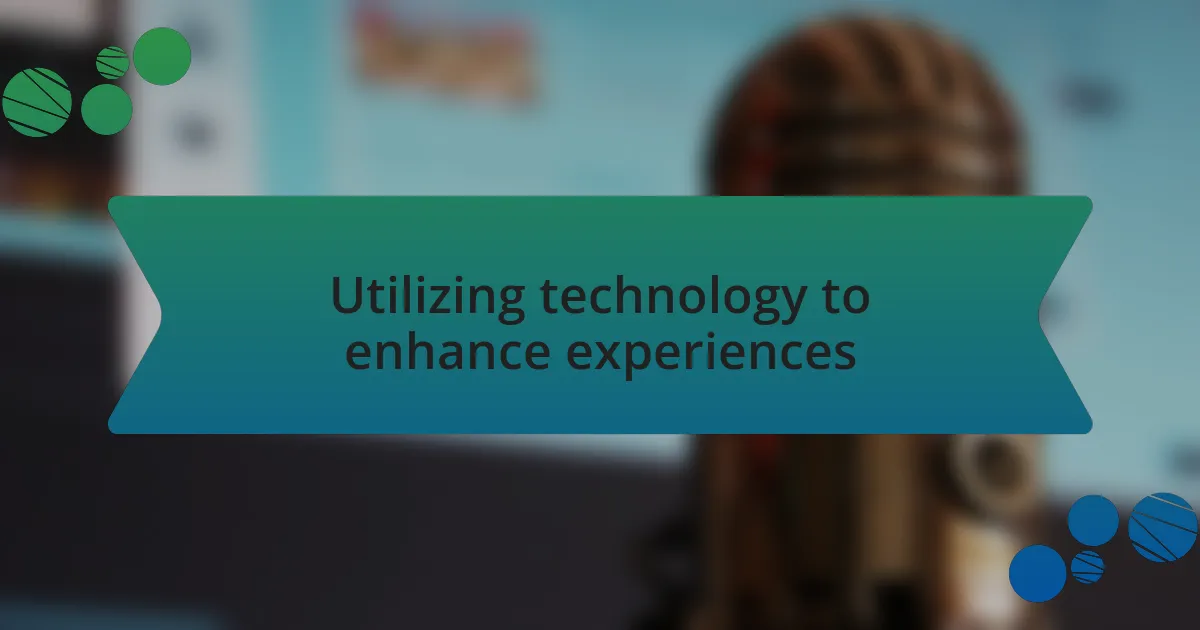
Utilizing technology to enhance experiences
Utilizing technology at events can turn a good experience into something unforgettable. At a music festival I once attended, a simple app allowed attendees to check live updates of set times and discover artists they might have missed. This not only made navigation easier but also ensured that no one had to miss out on any captivating performances. Isn’t it fascinating how a little tech can connect us more deeply to the music we love?
Live streaming is another game-changer. During an outdoor event, I experienced the thrill of watching artists perform in real-time from different perspectives via drones. This immersive experience sparked conversations among attendees about the performances, as we shared our own views and reactions online. How often do you think technology creates a sense of community that can transcend physical boundaries?
Interactive installations, such as light displays that sync with the music, can take engagement to the next level. I once participated in a synchronized light show where my movements influenced the visuals. The blend of music and personal interaction created an electric atmosphere that left me buzzing long after the event. Can you imagine the impact of making every individual feel like a part of a collective experience through technology?
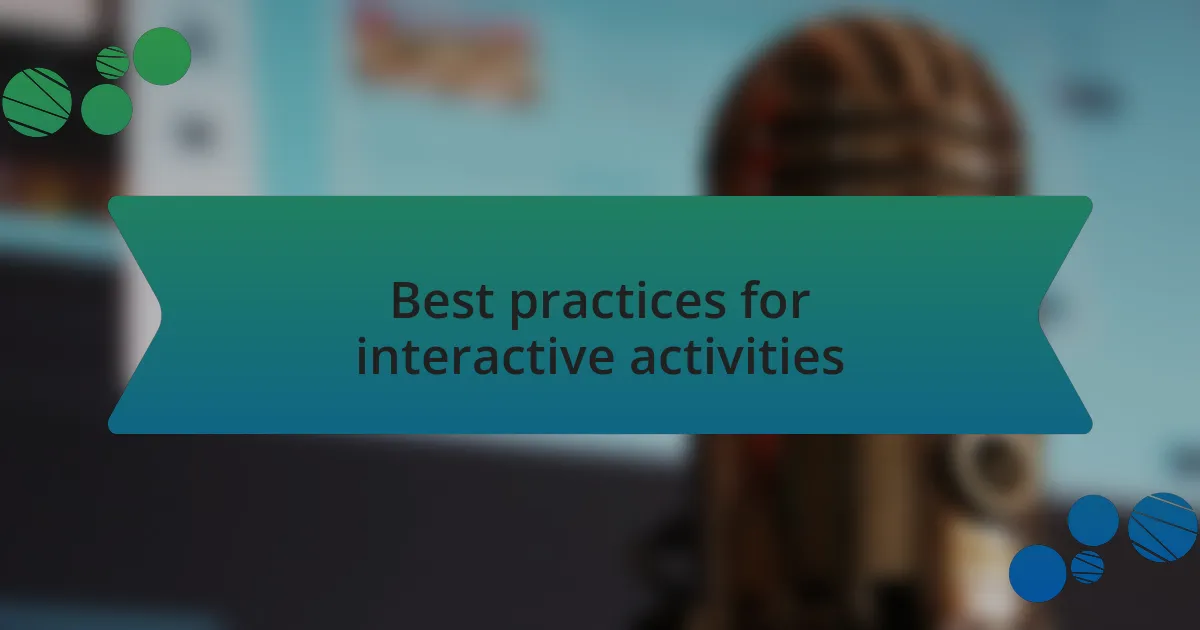
Best practices for interactive activities
Creating interactive activities is essential for maximizing attendee engagement, especially in the vibrant world of electronic music. I remember the excitement at a festival when organizers set up a virtual reality (VR) booth where participants could step into an immersive music video experience. It was remarkable to see people’s faces light up as they danced in a digital environment, blurring the lines between reality and fantasy. How exhilarating is it to be part of something that feels both personal and collective in such a unique manner?
Another effective tactic is incorporating audience participation through gamification. At a recent event, I witnessed a scavenger hunt that directed attendees toward various installations. As groups collaborated to solve clues, it fostered connections among strangers, creating a palpable sense of camaraderie. Isn’t it inspiring how some playful competition can transform an event atmosphere from passive watching to active involvement?
Engaging attendees through hands-on workshops can also be an effective practice. At one festival, a music production workshop allowed participants to create their own tracks using professional software. The thrill of seeing someone craft their first beat brought an infectious energy to the room. It’s amazing to witness individuals discovering their talent, and those moments often spark conversations that carry on long after the workshop is over. Have you ever felt the rush of creativity in a shared space? It’s those shared experiences that create lasting memories.

Personalized experiences for attendees
When I think of personalized experiences, I immediately recall an event where organizers used data from attendees’ past preferences to curate tailored music playlists. The moment I stepped into the venue, I was greeted with tracks that resonated deeply with my taste, setting the perfect mood for the night. Isn’t it incredible how music can create an instant connection? It felt like the entire atmosphere evolved just for me.
Another memorable instance was when I attended a festival that offered custom merchandise based on attendee profiles. I remember finding a limited-edition T-shirt designed specifically for festival-goers who had registered early. That little detail made me feel valued and part of something special, enhancing my overall experience. Have you ever worn something that felt like it represented a piece of your identity? It can really make a lasting impression.
Moreover, interactive photo opportunities tailored to individual themes added a personal touch. At one festival, I came across a photobooth where I could choose different electronic music genres as backdrops, capturing my vibe for the night. Seeing my friends dive into this playful moment helps forge unforgettable memories. Isn’t it fascinating how these small, personalized tweaks can elevate the collective experience?
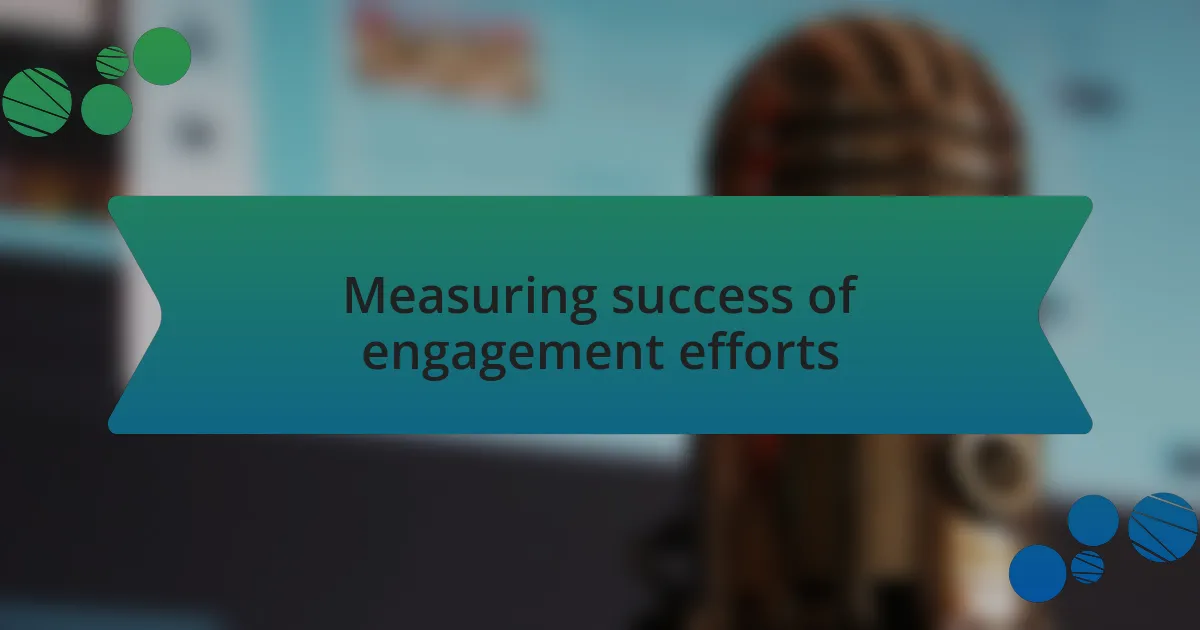
Measuring success of engagement efforts
To effectively measure the success of attendee engagement efforts, I often reflect on key metrics such as feedback surveys and social media interactions. I remember at one event, we distributed a simple post-event survey asking attendees to rate their experience and share their favorite moments. The results painted a vivid picture of what resonated most, and I was surprised by how significantly certain activities stood out.
Another valuable method is monitoring real-time engagement through platforms like Instagram or Twitter. I once noticed during a festival set that a specific DJ’s set prompted a flurry of social media posts and hashtags. It was exhilarating to see our audience connecting and sharing their experiences publicly, which made it clear that this engagement tactic was a hit.
Lastly, analyzing attendance patterns provides rich insights into what fosters connection. When I compared data from past years, it was fascinating to see how the number of attendees engaged in interactive experiences spiked. Did those personalized experiences lead to impactful connections? Absolutely. This kind of analysis reinforces the idea that measuring engagement is not just about numbers; it reflects how well we’ve resonated with our audience.